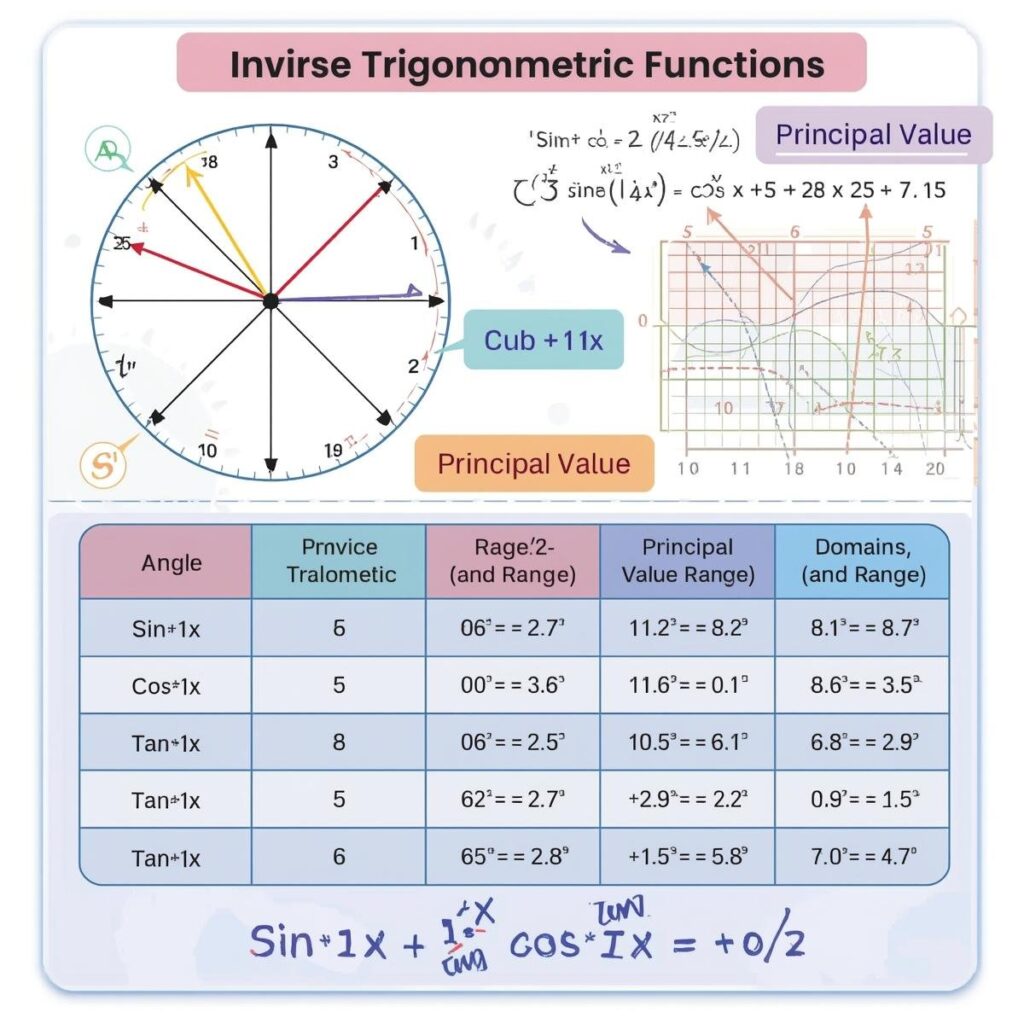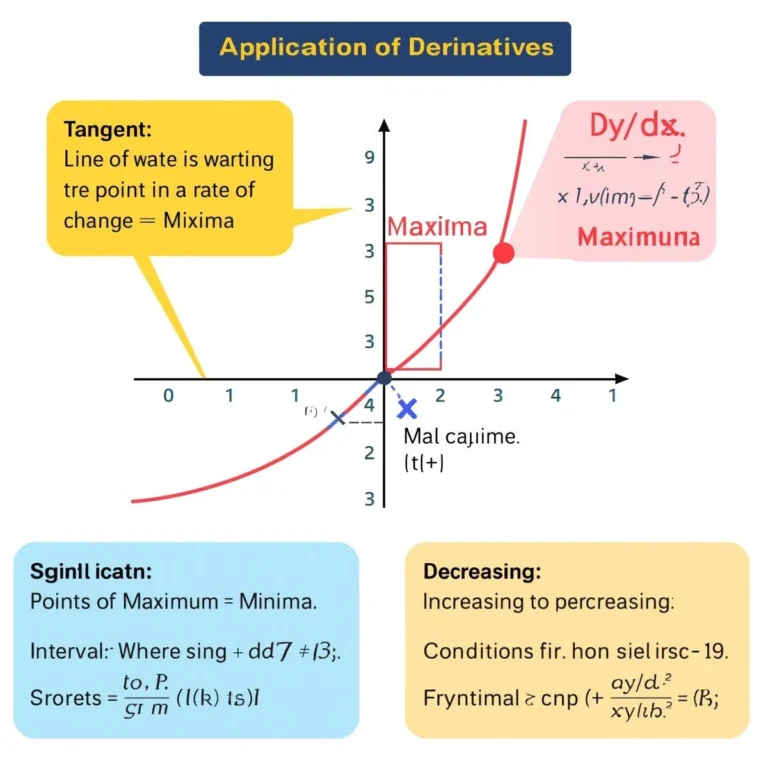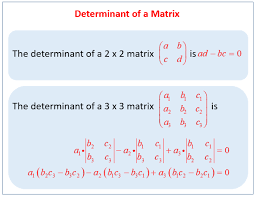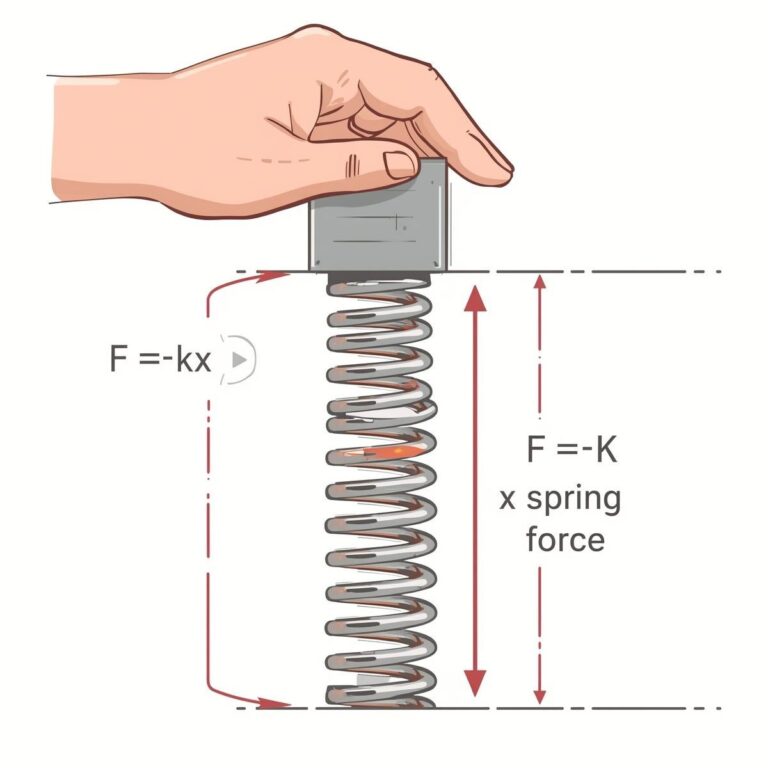Inverse trigonometric functions are the inverse functions of the basic trigonometric functions (sine, cosine, tangent, cosecant, secant, cotangent). They are used to determine the angle when the value of the trigonometric function is known.
If y = sin x, then x = sin⁻¹y, where sin⁻¹y is the inverse sine function.
Notation
- sin⁻¹x (arcsin x): Inverse sine
- cos⁻¹x (arccos x): Inverse cosine
- tan⁻¹x (arctan x): Inverse tangent
- cosec⁻¹x (arccosec x): Inverse cosecant
- sec⁻¹x (arcsec x): Inverse secant
- cot⁻¹x (arccot x): Inverse cotangent

Principal Value Branches
| Function | Domain | Range (Principal Value) |
|---|---|---|
| sin⁻¹x | [-1, 1] | [-π/2, π/2] |
| cos⁻¹x | [-1, 1] | [0, π] |
| tan⁻¹x | ℝ | (-π/2, π/2) |
| cosec⁻¹x | ℝ, x≠(-1,1) | [-π/2, 0) ∪ (0, π/2] |
| sec⁻¹x | ℝ, x≤-1 or x≥1 | [0, π/2) ∪ (π/2, π] |
| cot⁻¹x | ℝ | (0, π) |
Formulas
- sin(sin⁻¹x) = x, for x ∈ [-1, 1]
- cos(cos⁻¹x) = x, for x ∈ [-1, 1]
- tan(tan⁻¹x) = x, for x ∈ ℝ
- sin⁻¹(sin x) = x, for x ∈ [-π/2, π/2]
- cos⁻¹(cos x) = x, for x ∈ [0, π]
- tan⁻¹(tan x) = x, for x ∈ (-π/2, π/2)
Important Properties
- sin⁻¹x + cos⁻¹x = π/2, for x ∈ [-1, 1]
- tan⁻¹x + cot⁻¹x = π/2, for x ∈ ℝ
- sec⁻¹x + cosec⁻¹x = π/2, for x ≤ -1 or x ≥ 1
Example
Find the value of sin⁻¹(1/2).
Solution:
Let y = sin⁻¹(1/2)
⇒ sin y = 1/2
The angle whose sine is 1/2 is π/6 (or 30°).
Therefore, sin⁻¹(1/2) = π/6.
Illustrative Image
Summary Table
| Function | Domain | Range | Example |
|---|---|---|---|
| sin⁻¹x | [-1, 1] | [-π/2, π/2] | sin⁻¹(1/2) = π/6 |
| cos⁻¹x | [-1, 1] | [0, π] | cos⁻¹(1/2) = π/3 |
| tan⁻¹x | ℝ | (-π/2, π/2) | tan⁻¹(1) = π/4 |






